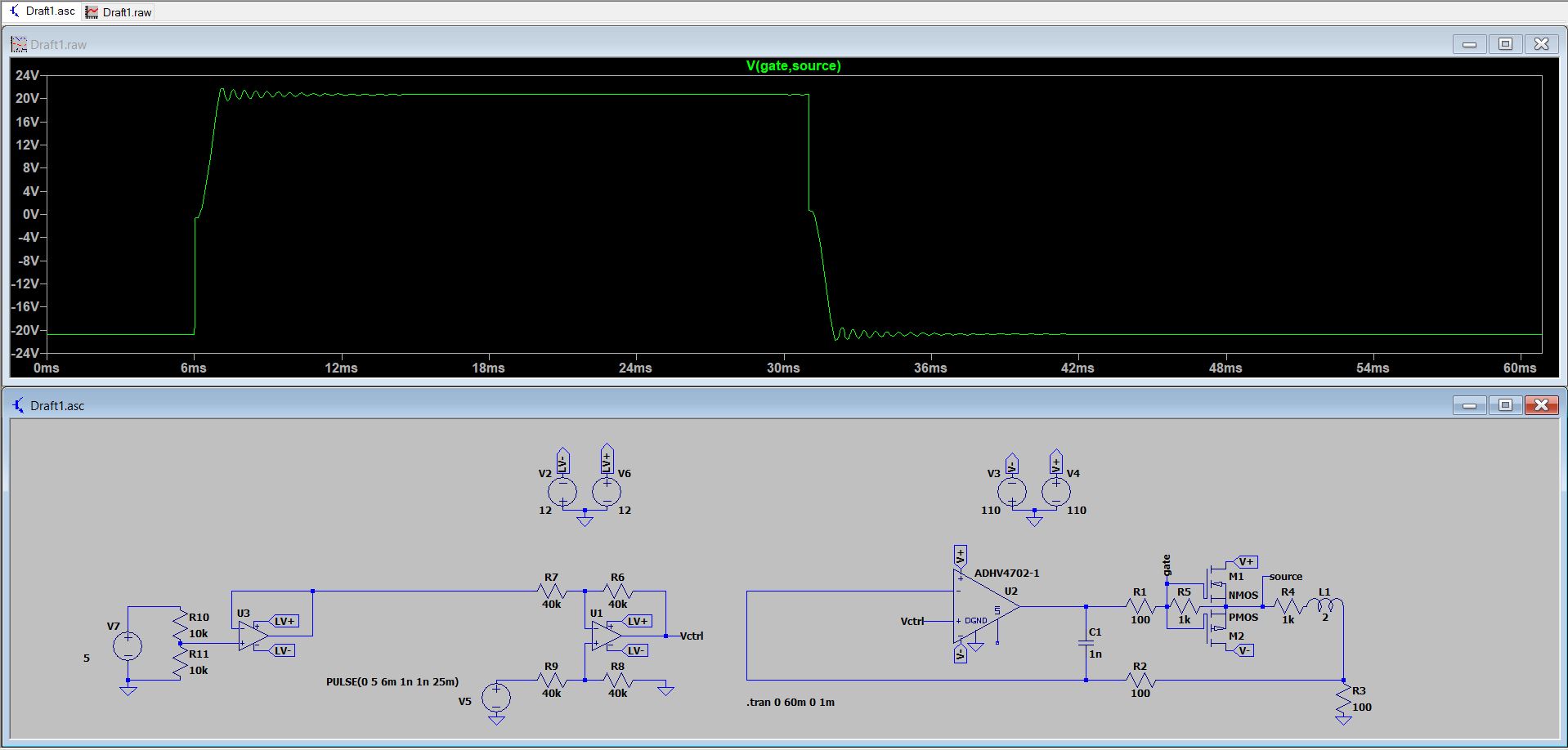Hi all, I made a thread previously regarding high voltage safety and design considerations here:
https://www.eevblog.com/forum/projects/high-voltage-safety-and-design-considerations/all in all, I relieved a lot of good feedback regarding the design and since there were no major issues, I decided to stick with the class B output amplifier. However finding high voltage BJTs was very difficult and only 1 or 2 parts came up which were any good for the job! I tried using fets which at first seemed like a great idea since I could find tons of them for high voltage applications with suitable SOA, etc. but after running the simulations, I noticed the resistor I used to eliminate crossover distortion (R5) , was actually making the FETs useless since it was too low of a value

I bumped it to 1k since the 25mA target goal is right on the limit of what the op amp can do, which is why I need the boosting stage to begin with. now the fets do the job but the gate-source voltage is outside the rating of the fets (picture attached)

In hindsight that's obvious since 10v (max Vgs) at 25mA is about 400\$\Omega\$

now to the main questions:
1)the gates and sources are shared, so I can't simply use a zener since it clamps to 0.3V on one half of the signal which is no good! maybe 2 zeners back to back can do the trick? I'm not sure if they are fast enough though (<1mS reaction time)
2)Is there another way to reduce the crossover distortion without having R5? (I'm not sure how I can bias a FET to make a class AB amplifier

)
3)Maybe other output element types would be more suitable? perhaps I should look into high voltage IGBTs?
4)Any other suggestions about a better / simpler approach (not about using lower voltages or a H bridge with single supply approach for driving the inductor , just about solutions to the amplifier problem please! I'd like to keep this as close to the attached schematic as possible since I have designed it and it's important for my final submission since I have to explain how and why things work

)